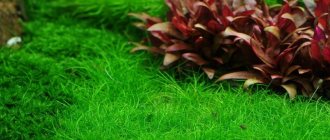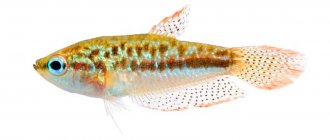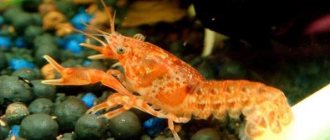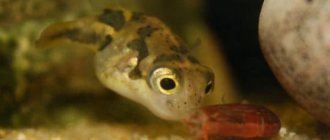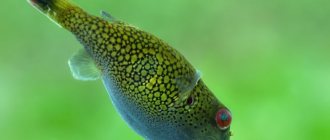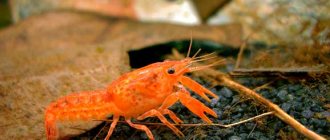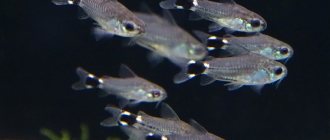The Eleocharis plant belongs to the sedge and is also known as bogweed or sedgeweed . There are about 260 varieties of this plant, most of which are grown in aquariums. It is known throughout the globe, most often it can be found in northern Africa and Asian countries.
Kinds
There are several varieties of Eleocharis. Among them is Eleocharis vivipara, which usually forms extensive bushes and grows quite quickly. Because of this, it is used to decorate the back of the aquarium. The height of the plant varies from 35 to 40 cm. The leaves of this species are dark green, shaped like needles. At the tips of these parts of the plant, daughter Eleocharis, which have aerial roots, are grown. The rhizome of this species is fibrous, it almost immediately grows into the soil.
Another species of this common shad is Eleocharis mini. This is a dwarf variety of the well-known blueberry. It is distinguished by a huge number of leaves. The plant looks like a small bush, its height is usually about 7 cm. This subspecies is used to decorate the front wall of an aquarium because its bushes visually increase depth. Being in favorable conditions, Echeolaris usually grows and fills the entire bottom of its “house”.
Another subspecies of the woodworm is Echeolaris parvula. The plant has pale leaves that form dense but low-growing clumps. Eleocharis acircularis also boasts needle-like leaves and dense bushes, whose height varies from 10 to 40 cm. If the aquarium is poorly lit, the height of Eleocharis will not exceed 10 cm. This subspecies grows slowly. It is perfect for decoration if the water level in the aquarium is low.
Description
This plant has a fairly wide growing range. It is found in both North and South America, as well as throughout Eurasia and Australia. This is mainly the area near the banks of swamps and sluggish rivers. Visually the bushes resemble a lawn. If you care for it properly, you can keep it in both a spacious and compact aquarium.
Eleocharis belongs to the Sedge family and, from a biological point of view, is a full-fledged weed, due to which it reproduces at a fairly rapid pace. Scientists have counted over 260 varieties of this underwater culture, and many of them easily take root in decorative home ponds.
The plant has long, thin and stiff stems. They are mostly green in color but have a brownish upper part. The roots are thread-like, highly branched, thanks to which they easily cling to the soil and stay in it. Therefore, if there is a need to transplant bushes to another aquarium or zone within the same container, then it is better to do this together with the soil in order to avoid damage.
Sizes can vary greatly depending on the variety. There are small species that reach a height of no more than 10 cm, but there is also a sedum up to 40-45 cm.
Care and maintenance
Eleocharis vivipara is quite unpretentious. It is better to plant it in small or medium-sized aquariums, because in a large “home” it will not have enough light. This plant is planted only on sandy soil. The soil thickness should be more than 4 cm. The ambient temperature should be approximately +24 Celsius. However, Echeolaris can live in colder water, but its temperature should not be less than +18. The hardness indicator should not exceed 6 dH, and the acidity of the water should not exceed 7 pH. The illumination of the aquarium should also be within 100 LM/l. To speed up the growth of Eleocharis, it is fed with microfertilizers containing carbon dioxide. The “house” of this plant must have a filtration system. To reduce the risk, aeration is usually performed.
It is also advisable to prune the plant because it grows at a high rate. To better control the growth of the species, you need to surround it with snails and amano shrimp. But this plant will be in danger if the number of single-celled organisms in the aquarium sharply increases, because of this the leaves will begin to die and the water will become cloudy. Excess sprouts are also harmful and should be cleaned once a week. The plant also needs to be combed.
Echiolaris mini loves sandstones, and the soil thickness should be about 5 or 7 cm. This species is usually planted in small bunches, a few centimeters apart. The plant can exist in a wide range of temperatures: from +15 to +27. Water hardness should be at least 4 dH, and acidity should not be less than 5 pH. To speed up the growth of Eliocharis mini, you need to feed it with carbon dioxide and mineral fertilizers.
A species called “Acircularis” loves haircuts; this procedure should be carried out approximately once a month. Sprouts do not form on the leaves, so there is no need to comb out this scab. This plant loves warmth, so the water temperature should be +23 ° Celsius. But despite this, Echiolaris mini will be able to survive changing conditions and a colder habitat. The moisture hardness should not be higher than 15, and the acidity can be as low as 7 pH. The soil should be rocky, ideally its thickness should be 4 cm or more.
Eleocharis acicularis
Sitnyag needle-shaped
The needle grass its name to the absolute absence of leaves and the ability to create thickets of needle-like narrow stems. In terms of structure, the needle-shaped plant looks like a leafless shrub with a large green shoot, the edges of which at the crown are brown and needle-like in appearance. The shoots are small, elliptical in appearance. The plant reaches a height of 16 cm. The flowers are arranged in a helical shape, the fruit of the plant is white. The roots are thread-like and highly branched.
Conditions of detention
The needle grass grows better in a container with a small amount of water, since its development may slow down in a large aquarium. Ideal characteristics for water:
- the rigidity should not be more than 14°
- pH 6. 4-7. 5
- temperature from 21 to 24°C
Constant cleaning of the aquarium and changing the water is necessary; without this, there is a possibility that the stems will become overgrown with algae. Eleocharis looks great in the foreground and background of the aquarium.
Needle meadowsweet can grow in any light, but it must be protected from direct rays of the sun. It is not recommended to use incandescent lamps; it is enough to light it from the side and install fluorescent lamps. The duration of daylight hours should not exceed 13 hours.
For soil, soil, sand and clay are usually mixed. This plant does not require feeding with nutrients. The needle-tailed plant is best suited for a cold aquarium, as the plant grows depending on the season.
Breeding
Needlewort is propagated through layering that grows close to the main stem, which must be disconnected and planted in free space.
Reproduction
On large leaves with a diameter of more than 10 cm, daughter plants are formed. You should wait until they start to sprout roots. This way they will take root better in the soil. When these daughter shoots are fully formed, they should be separated from the leaf and planted. These bushes can be planted close to each other, in which case the thickets will be dense.
A haircut
Eleohas parvula necessarily requires regular haircuts. If this is not done, then it will grow very quickly and turn the aquarium into grass thickets. There are 2 types of cutting of the underwater plant Eleocharis parvula:
- milled;
- below zero.
Thined pruning of Eleocharis is required to give the plant a beautiful shape. To do this, you need to place the scissors in an almost vertical position, and leave the height of the plant from the bottom about 4-6 cm. Trimming Eleocharis to zero is done only for well-rooted algae. After the procedure, the plant shoots out many arrows and thickens the lawn. To do this, you will need to cut off the upper part of the parvula, leaving 2 cm from the roots.
It is strictly forbidden to trim the plant if it is only colonizing the aquarium. Eleocharis parvula is a very susceptible plant and gets very sick during the period of adaptation to the new environment (1-2 weeks), so such actions can lead to its deterioration or death.
Useful lifehacks
- Eleocharis needs to be replanted along with the soil due to its branched root system.
- To prevent excessive growth of green algae, you need to use an external filter and set up a biofiltration system.
- A fork will help tear off any excess sprouts.
- It is necessary to clear Echiolaris of moss, because it gets clogged up in the bushes of the plant.
- If you no longer want to grow Echiolaris, you should constantly remove its shoots, even after removing the aquatic plant itself.
- In order for the plant to develop quickly, you can add theodoxus, which are underwater orderlies, to it.
- This species is often used as an anchor, holding Riccia at the very bottom.
Eleocharis mini
Eleocharis mini
Eleocharis mini is recognized as one of the smallest and most outlandish of the entire species of sitnagi. This is a perfect version for seating in the foreground of an aquarium.
Unlike other varieties, it has curled leaves that grow 3-4 cm in length, and this curly lawn does not exceed 3 cm in height. The plant grows extremely slowly, which is why it very rarely needs to be trimmed.
aquarium plant
The plant has especially many names, which sometimes causes confusion with its definition. It is also called tiny eleocharis, dwarf eleocharis, tiny eleocharis, and eleocharis parvulus.
Video - Eleocharis in the aquarium
https://youtube.com/watch?v=OfmBWZDgVBY
Eleocharis parvula is extremely popular because it can be used to create a beautiful lawn in an aquarium. The height of its stems can reach 10 centimeters, but more often it grows to about 6 centimeters. This type is used to decorate the foreground in aquariums.
Growing parvula is quite difficult. It especially has to be protected from fouling by plaque or small algae. The lightest layer of plaque causes thin sheets to lie down and begin to die. And if we remember that this species takes a long time to take root in the ground, this makes caring for the delicate stems even more difficult.
Experienced aquarists recommend not planting Eleocharis parvulus at the stage of launching an artificial reservoir. It is easier to root it in a formed aquarium, where the overall balance has already been established. The plant needs to maintain the carbon dioxide concentration at a certain level. The plant is very responsive to feeding with aquarium fertilizers. Caring for Eleocharis parvula involves regular pruning and thinning of the thickets. If this is not done, then its root part begins to grow strongly, and the level of the plants rises by three centimeters.
